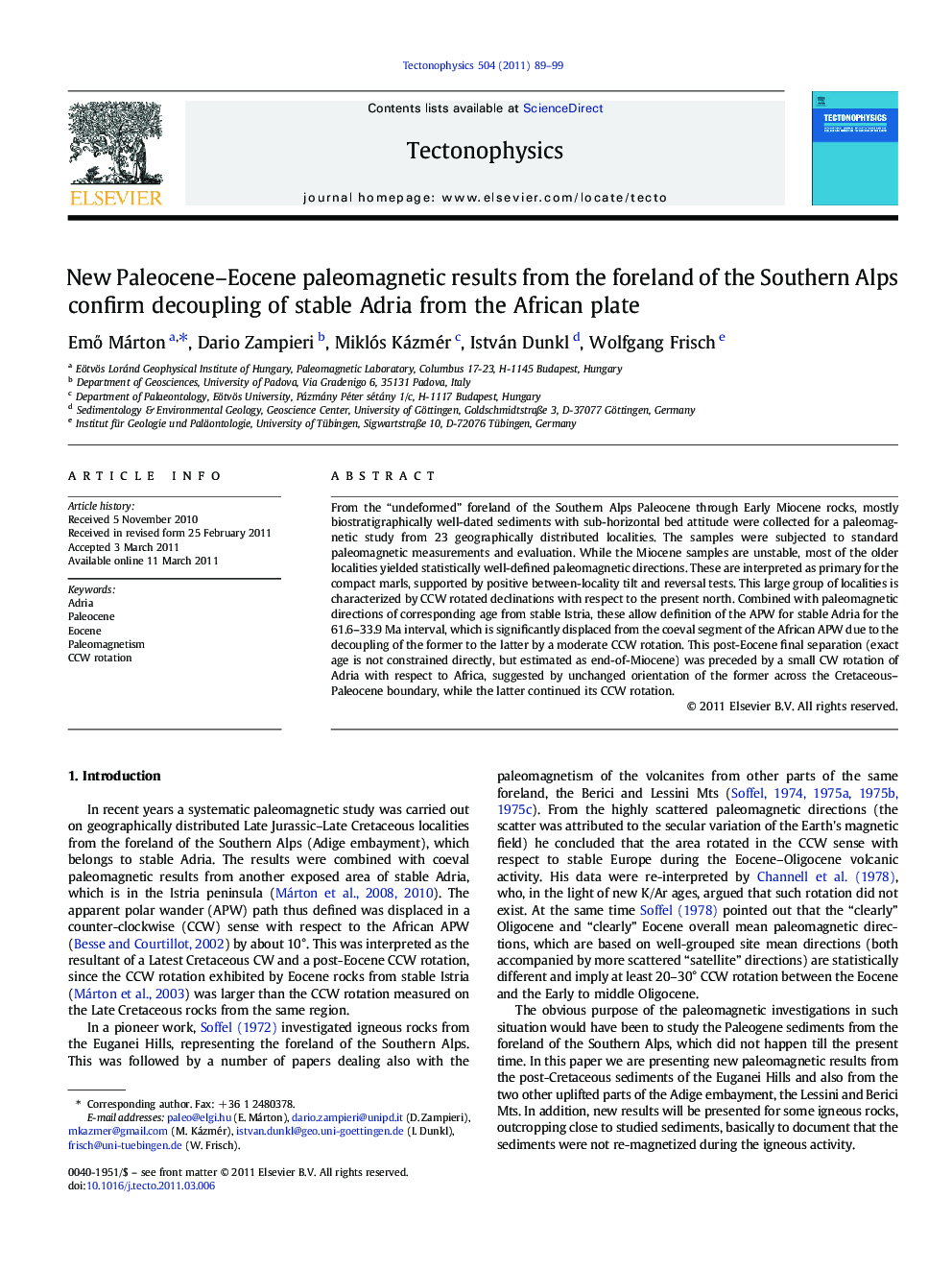| Article ID | Journal | Published Year | Pages | File Type |
|---|---|---|---|---|
| 4693180 | Tectonophysics | 2011 | 11 Pages |
From the “undeformed” foreland of the Southern Alps Paleocene through Early Miocene rocks, mostly biostratigraphically well-dated sediments with sub-horizontal bed attitude were collected for a paleomagnetic study from 23 geographically distributed localities. The samples were subjected to standard paleomagnetic measurements and evaluation. While the Miocene samples are unstable, most of the older localities yielded statistically well-defined paleomagnetic directions. These are interpreted as primary for the compact marls, supported by positive between-locality tilt and reversal tests. This large group of localities is characterized by CCW rotated declinations with respect to the present north. Combined with paleomagnetic directions of corresponding age from stable Istria, these allow definition of the APW for stable Adria for the 61.6–33.9 Ma interval, which is significantly displaced from the coeval segment of the African APW due to the decoupling of the former to the latter by a moderate CCW rotation. This post-Eocene final separation (exact age is not constrained directly, but estimated as end-of-Miocene) was preceded by a small CW rotation of Adria with respect to Africa, suggested by unchanged orientation of the former across the Cretaceous–Paleocene boundary, while the latter continued its CCW rotation.
Research highlights► Paleocene–Eocene marls from the foreland of the S. Alps show CCW rotated declinations. ► Combined with results from Istria, the 62–34 Ma APW for stable Adria is now defined. ► Latest Cretaceous and post-Eocene movements of Adria relative to Africa is confirmed.
